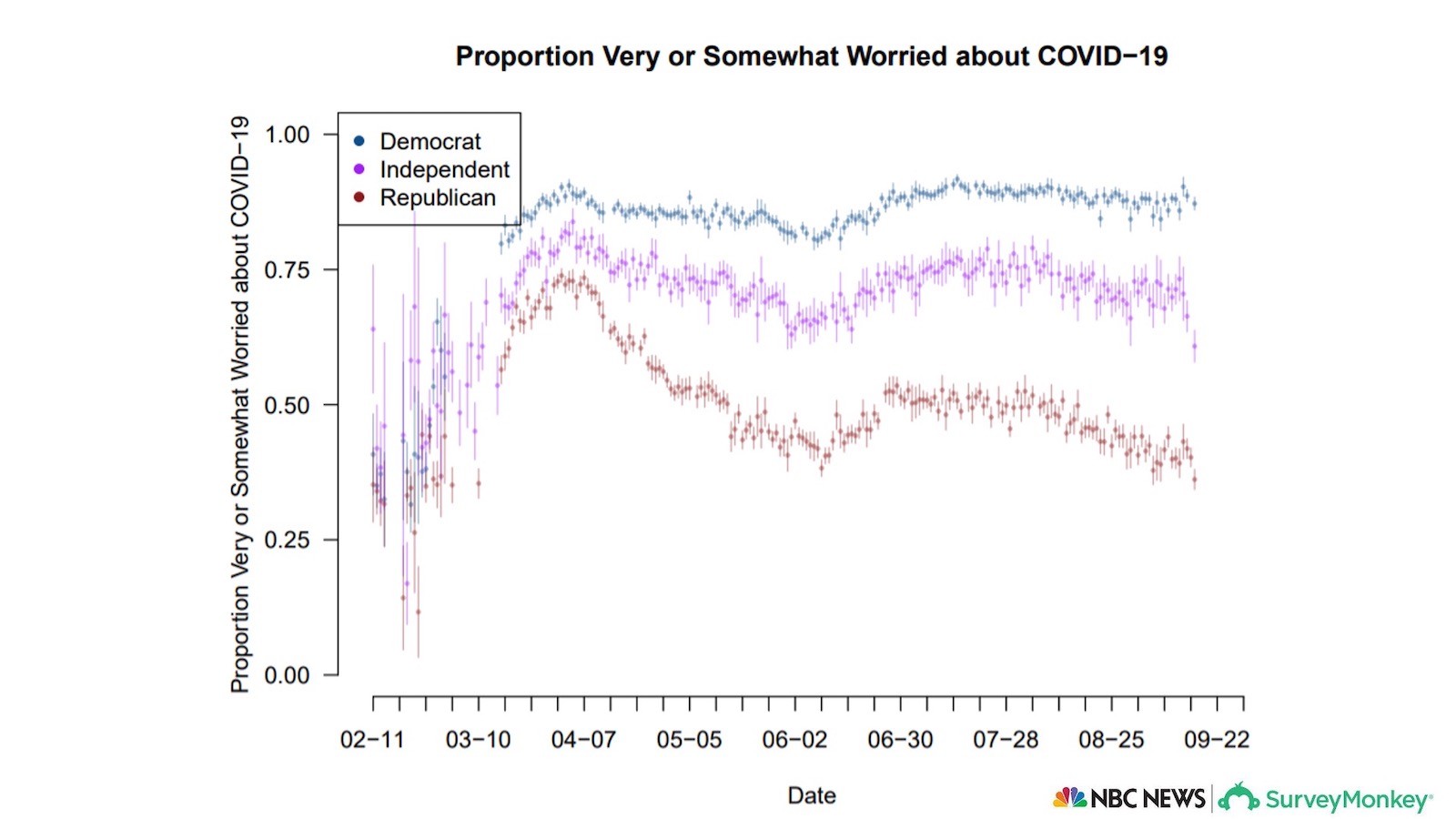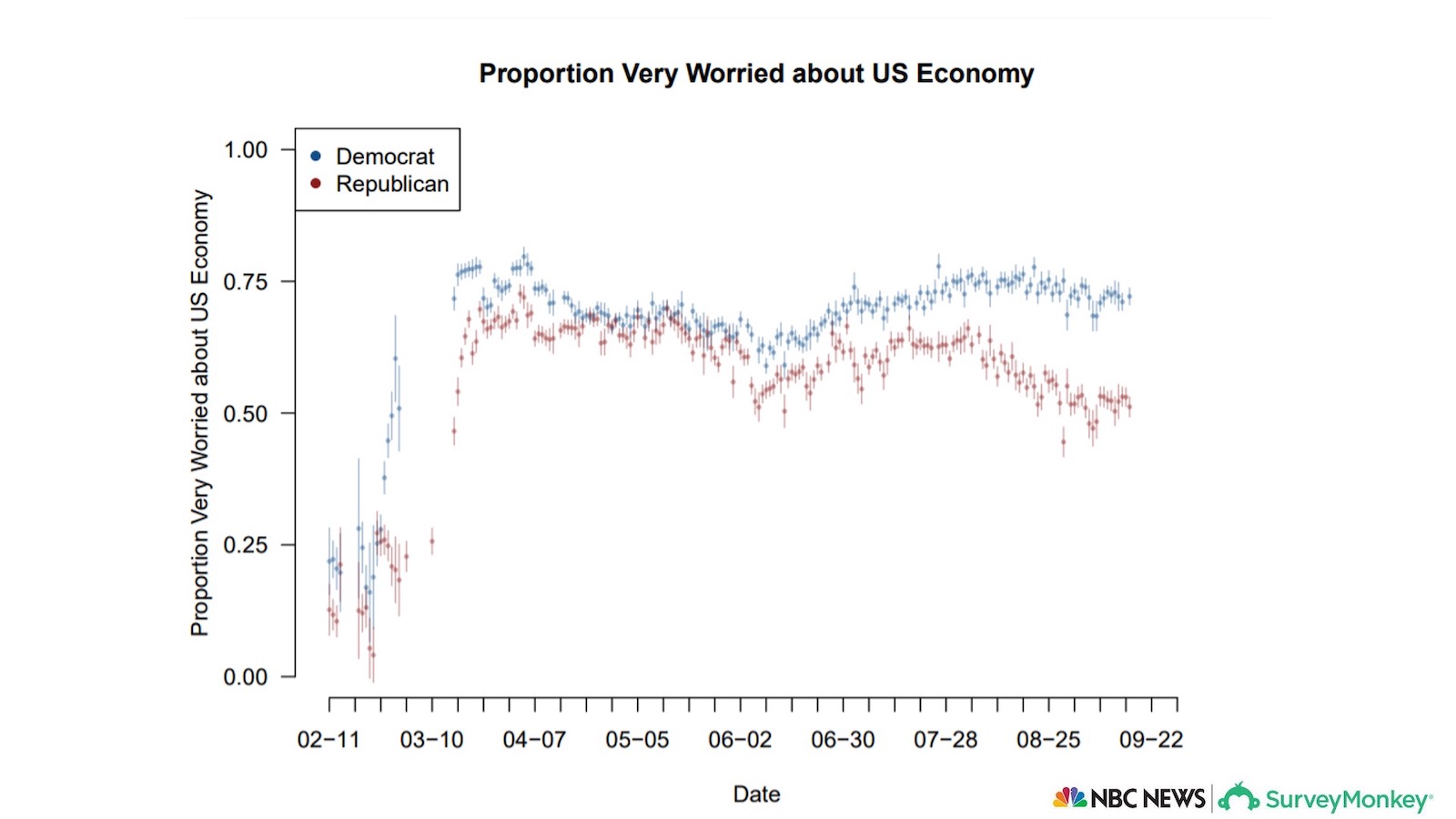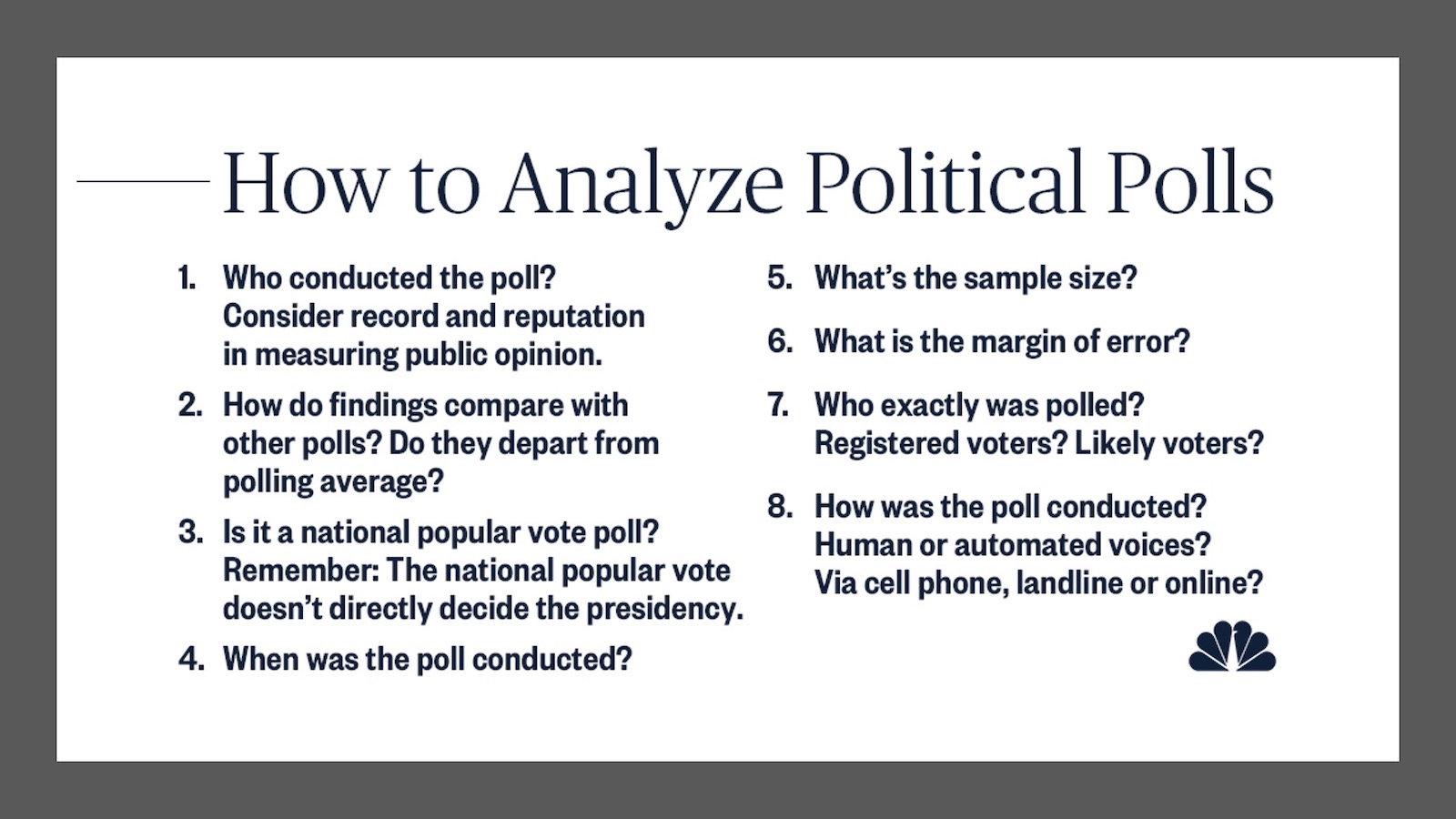(Excerpts from transcript of the original presentation given on October 12, 2020.)
Lia Howard: Good afternoon and welcome to Listening Well During the 2020 Election: Encountering Ideological Differences with Empathy and Intellectual Humility. Today we’re going to provide some approaches to how do you listen to those with whom you disagree.
The Stavros Niarchos Paideia Program serves as a hub for civic dialogue in undergraduate education at Penn. SNF Paideia collaborates with many campus entities to promote opportunities for students to develop the knowledge, skills, ethical frameworks and experiences necessary to be informed, engaged and effective Community members and leaders in society.
The SNF Paideia Program encourages the free exchange of ideas civil and robust discussion of divergent views. And student community wellness through SNF Paideia designated courses, a Fellows Program, and campus events. Today is an example of us partnering with other organizations on campus and we are proud to be joined today by Andrew Arenge from the Fox Leadership and PORES program and Batsirai Bvunzawabaya from Counseling and Psychological Services at Penn.
The three of us have created this workshop together and we are deeply grateful for their partnership and collaboration.
What Perspective Public Opinion Polls Can Provide
Andrew Arenge: I’m Andrew Arenge, the Director of Operations for the Fox Leadership Program and the Penn Program and Opinion Research and Election Studies which we call PORES. I want to set up for today’s discussion by providing information about the 2020 elections, public opinion polls, and some of the polarization that we can see through all of that.
This information is based on the work that we do through PORES on campus where we teach students how to interpret, study and conduct their own public opinion polls.
And so the big thing to remember is that polls are very much a snapshot in time. They are a reflection of the people that were interviewed and how they felt at the moment in which they were interviewed. For instance, at the moment we are recording this session, there had been two debates that had taken place. The presidential debate and the vice presidential debate. About a week ago we all learned that the president was diagnosed with the coronavirus. All of these news events impact the way people feel about issues and how they respond to questions they get asked by pollsters. Often it will take a little bit of time for those feelings and opinions to appear in public opinion polls, because there’s always a bit of a delay and a lag. Remember that a poll is a snapshot in time and it’s not necessarily indicative of what’s going to happen on election night.
My team at PORES have been partnering with our colleagues at NBC and NBC News and also at Survey Monkey to do some polling over the last couple of months. Since the pandemic hit back in February, we’ve been doing 6,700 interviews a day. At this point there have been approximately 1.3 million interviews overall in our survey.

We’ve been asking very general questions just to gauge people’s opinions about the election and also about the pandemic. The results that you see on the screen right now are the results of the percentage of people when asked if they were worried, if they were very worried, not worried, not all that worried, or not worried at all about the Corona virus.
And this is the percentage of people that expressed some worry about Covid-19 and we’ve split that out against party partisanship.
And the real big point here and just to make this clear for you all, is that the polls actually provide us the ability to understand kind of the polarization that we are experiencing in our country and that actually is very much at the center and the basis for the conversation that we’re having today. Where even though we are all kind of wrestling with the implications of Covid-19, we actually have differing opinions.
You can see towards the beginning of the pandemic and when we first started in the field. There was no discernible difference between Democrats, Republicans, and Independents. And as we’ve gotten later in the pandemic, you can start to see that the percentage of folks that are partisan who said that they are worried about Covid-19 have actually started to split off. You can see here in the middle right around June when we saw just a bit of an uptick and the amount of worry that Republicans expressed and it’s been a cascade down further, with Republican members, ever since. But I should specify that this polling results that I’m sharing with you were before we learned that the President had a Covid-19 diagnosis. And so it’s completely possible that when we get the latest set of data, that this result would actually be slightly different.
But the big point here is just to remember that the polls provide us an insight into the polarization that we’re all living with and kind of the foundation of the assumptions and beliefs that different people kind of have about the kind of the world that we live in.

We asked a similar question where it looks at the percentage of people that are very worried back to the U.S. economy. And you can see, generally, throughout a good portion of the beginning of the spring and kind of the early parts of the summer Democrats and Republicans are pretty much in line together. But as we’ve gotten kind of later towards this point that we’re in right now, which is in the fall of 2020 you can see kind of a difference between the percentage of Republicans who say they’re very worried about the US economy versus the percentage of Democrats. This becomes super important as we start to engage in conversations about politics trying to do our best to listen, where other folks are coming to just come to the realization that we all don’t necessarily make the same assumptions about the world.
And so these snapshots provide us a kind of a basis to try and get a sense of how our fellow Americans and fellow voters are kind of seeing the key issues of the day and our kind of seeing where we’re headed and kind of how we’ve all personally been impacted by kind of the challenges that we have currently facing both this pandemic, with the challenges in the economy and beyond.
Best Practices When Looking At Polls
I want to provide a few best practices when looking at polls. This is an infographic that my friends and colleagues over at NBC News have put together.
And these are just questions that I think are really important that you ask yourself as you start engaging with public opinion data.

- Always asking yourself, who conducted it? You’ll often see polls that are conducted by media organizations or universities. Those are the ones that you should probably trust more than ones that are may be released by political campaigns, just because incentives aren’t always aligned.
- How does the poll compared to other polls?
- And then a single poll is just simply a data point. So being able to see how it kind of averages with all of the other data points that are being measured become super important that they’re able to put things in context.
- When was the poll conducted?
- What was the sample size? Generally larger sample sizes are better than smaller just because it’s going to have a smaller margin of error.
- Keep in mind this margin of error that those are estimates. Don’t project a ton of specificity onto a poll result.
- Exactly who is polled? We will sometimes see polls of all adults, or registered voters, or likely voters and those are three very different populations. All adults can include anybody that’s over the age of 18, registered voters are specifically people that are registered to vote and are on a voting role, and likely voters are voters who pollsters are kind of modeling how likely, the likelihood that they’re going to vote in this election, which actually is really hard to do because you’re attempting to model something that you don’t know. You don’t who is going to show up when November rolls around.
- And then last but not least is how was the poll conducted? There are better methodologies and worse methodologies that lead to more precise or informative polls or maybe not, but knowing exactly whether it was a phone call, whether they called cell phones and land lines. Was it conducted online or there was it sent via text messages to the phones, becomes really important to get a sense of how much meaning you should potentially put into those results.
But all of this is to set the scene to the conversation that we’re going to engage in and provide information to think about as we’re not only engaging with folks that think differently about politics from ourselves but also engaging with how we’re measuring all of this stuff as well. Because, as you can see with some of the poll results that I presented today, we have a large amount of polarization that exists in our country. And part of that is because we kind of see events and we see things is vastly different ways from one another.
Mental Health Perspective
Batsi Bvunzawabaya: I’m the director of outreach and prevention services at CAPS, which is the Counseling Center on campus and I just wanted to share some insights from a mental health perspective around the time that we’re currently living through with this pandemic.
Something that we’re noticing, not just within the Penn community, but broadly speaking, is an increased sense of anxiety, worry, and uncertainty about the future. Also, rates of sadness, depression, increased worry about the health about the economy, about experiences of discrimination that certain populations are experiencing.
So all of these things we know from a mental health perspective, may be a lot of stressors that people are currently experiencing right now and one of the things that I think the role that you can have in terms of thinking about listening and being there for each other is really thinking about how we all respond differently. And we all need to cope differently as a result. So in just reflecting a little bit on the data that Andrew shared. As you can see, we can all have different opinions and maybe even within some of the political beliefs that we each hold, we may all be responding differently to this time.
How do we communicate with each other in a way that allows us to honor some of those differences, but also promote a way of coping together as we notice some of those differences in how we may be feeling? With some of the mental health stressors that I mentioned, it’s also important to recognize that some of these feelings are really normal. We’ve all been asked to adjust in pretty significant ways in response to the pandemic. And maybe even in response to the upcoming elections, but really recognizing that we may all need different things. And maybe some of the feelings we have may be normal, so maybe there may be feelings of anger or frustration or sadness. But just really recognizing that maybe we all need support in different ways and just encouraging people to seek that support, as needed, whether it’s mental health support or other forms of support within the community, but just really recognizing that we may all be in different places and need different things, in terms of what can help us feel better during this time.
Lia Howard:Thank you so much for sharing. Before we get into some qualifiers, I want to introduce myself. I am the Student Advising and Wellness Coordinator and Advisor for the SNF Paideia program, but I also am a political scientist and as a political scientist, this period has been quite interesting to say the least.
The political scientist Samuel Huntington wrote a book called, “American Politics, the Promise of Disharmony.” And in that book, he has a very important and famous quote. He says, “there is an ever present gap between American ideals and American institutions in practice.” And certain periods in American history people are awake to that gap. He calls them periods of credo passion when people realize that there is that gap and it needs to be closed. Other times are called credo passivity moments where people are not aware, they’re asleep to the gap. And I think right now we’re in one of those moments. Those credo passion moments where there’s a lot of emotion and so the things we know cognitively and rationally about American politics are reckoning with our emotional feelings about things and emotion sometimes is taking the day. And so what do we do with those emotions. How do we integrate them into how we think and how we rationally approach politics. That’s what we want to look at today.
Qualifiers to Listening
Batsi Bvunzawabaya:To follow up on what Lia just shared, it’s important that we know what those emotions are because maybe those are going to be part of what’s guiding us as we have these conversations with other people. And a big part of that is knowing whether you have the emotional capacity to even be having these conversations. So maybe at times you’re feeling really tired, maybe drained, maybe depleted and maybe those are not the best times to actually try to have a difficult dialogue with somebody.
So I think the first point is just making sure you’re taking care of yourself. Recognizing what you have energy for and what you have capacity for and if you can identify what specific feeling you’re having. Is part of what you’re feeling shame, is part of what you’re feeling guilt, is part of what you’re feeling a lot of anger? And where could those emotions be coming from and just really being thoughtful about that before you engage in these conversations. And then, of course, thinking about those emotions during the conversation and even after so finding ways to check in with yourself.
The second point that we want to emphasize is to really make sure you’re mindful of your own boundaries. Again, sometimes maybe somebody is ready to have a conversation with you and you may not be in the space that you’re ready to do that. So just really being thoughtful about defining those boundaries.
Because maybe you can recognize when maybe those boundaries are not being respected and then of course, what do you need to do in order to reassert your boundaries in ways that feel comfortable for you. Whether those are physical or emotional boundaries.
Lia is going to share a little bit of some of the suggestions from Alan Jacobs’ book.
Intellectual Humility
Lia Howard:Yes, thank you, Batsi. Alan Jacobs is a scholar, who’s written a book called “How to Think: A Survival Guide for a World at Odds.” And he has this checklist at the end of the book, and we’ll return to some of the aspects of the checklist at the end of this conversation.
But before you even get into a conversation with someone with whom you know you probably have some areas of disagreement, there are some things you want to be careful about in addition to what Batsi just shared so well.
You want to be careful to avoid people who fan the flames, people that intentionally try to stir up and agitate things maybe those aren’t the people you want to practice these kinds of postures around listening that we’re going to talk about. Maybe those are the people you want to leave for a kind of a quick, more speedy conversation, but not ones you want to listen to deeply.
And finally, when you’re looking to talk to someone who you know holds views that you disagree with, seek out the best fairest minded people. Seek out those who will articulate positions that are different from yours. That will articulate them well. That have thought through their ideology. That know where they’re standing. Those will be the best people to represent the kind of difference that you’re seeking to learn about.
We’re going to watch this video together.
We’d like you to think about why this time period is so hard for discussion. And what about the concept of intellectual humility spoke to you?
Three different postures for dialogue
We want introduce three different postures for listening well:
- Before a dialogue,
- during a dialogue,
- and after the discussion.
That’s how we’ve divided our discussion today.
Before Postures
What do you do before? What’s the posture before?
I’d like to start with, first, metaphors matter. Here are two different metaphors of dialogue. The first is that of a culture war. Words associated with car include protecting yourself, anger, and fear. Conversations that are warlike are ones in which you are defensive, you’re defending your own ideas and then you launch on the offensive with your sharpened arguments you use them like spears towards the other person.
Conversation around politics often adopts the metaphor and mindset that we’re at war. And so I either have to be afraid of you, are very angry at you, in order to talk to you. And really, those two emotions fear and anger, get in the way of real genuine listening and actually real genuine sharing as well.
So I ask you to think about another metaphor and that of a common table. If we approach political conversations with the mindset of the common table then, suddenly, you’re not my enemy, you’re the person I’m passing the bread to and I would love to talk to you about what I think, and I would really love, even more so to listen to you. So again, that metaphor of a table where you literally set the table for another person. Because when you’re setting the table for someone, when you’re offering hospitality to someone, you put yourself second. You literally are thinking about how can I do this, how can I lay that fork and put that plate and get that clean water for them in such a way that I can serve them.
Batsi Bvunzawabaya:Wanting to really expand on that, part of the before posture is really thinking about setting our intentions, or our expectations. As Lia was mentioning, if we’re thinking about this as a culture war, part of what you’re doing is sort of dehumanizing the other person. And if we’re thinking about it from that perspective, it doesn’t leave much room for us to find common ground or to find that common table and feel like we’re serving the other person. At that moment, we’re really thinking about how do we defend ourselves and our ideas. It can be painful for us to admit that we’re wrong because it feels like it’s threatening our sense of self and that can be hard too to feel like we want to be vulnerable with the other person. So part of what we want to share right now is thinking about how do you set your intentions for how the conversation is going to go. What are you hoping happens after the conversation. Are you hoping that, you know, no matter what happens, this relationship can be over. And you’re willing to let go of that relationship.
Or is your goal in that moment to really think about how do you learn about the other person’s ideas and how do you convey your own ideas. Maybe that’s part of what you’re hoping for is a real rich discussion and how to exchange ideas and that feels more like you’re setting the common table, it feels like you’re trying to think about how to bridge. Build the bridge between the two of you within that conversation, as opposed to maybe thinking that if you have this really difficult dialogue it may end with the two of you not talking anymore.
But we also just want to be mindful that even as we’re talking about setting intentions or expectations you recognize that there are different topics that carry a different level of weight. So if you feel that somebody is saying things that are you know harmful in any way or dehumanizing or discriminatory, that’s not the type of conversation we are describing right now. We’re not talking about somebody engaging in hate speech or violent speech we’re talking about somebody who’s coming to the table and really wanting to engage in a meaningful dialogue. Because maybe you may set your intentions but if they’re not trying to meet you there, then, of course, that’s not necessarily a healthy conversation to be engaged in.
We also want you to be thoughtful about what your previous experiences have been. Whether it’s engaging with that person or engaging in these types of topics. Because for some of us, and we’ve experienced previous traumas that may shape how we show up in conversation. So wanting to be thoughtful about that too and setting your intentions and again being mindful of what you have capacity for based on whatever the conversation is that you’re about to have regarding someone’s political views or your own.
We also just want to emphasize, just because you’re setting your own intentions, it doesn’t mean that you can control the other person’s behavior. Part of what you can do is take accountability for yourself, take accountability for your own thoughts, your own feelings. And, you know, letting the other person have whatever reaction they have. And of course, again, going back to what we shared earlier, if you need to set some boundaries because the other person is now disrespecting some boundaries that that’s something that needs to be part of the conversation.
But feeling anchored in your own intentions can be helpful so you don’t lose sight of what you’re hoping to do, especially if the conversation feels like it’s going in a direction you don’t want it to go in. You’re able to sort of anchor yourself within your intentions for what you’re hoping to get out of it.
So for example, if you start to feel like a conversation is becoming maybe kind of toxic between you and the other person. Maybe again feeling anchored and saying, I want to make sure that I’m setting a common table with this person I want to connect with them. That’s my goal.
So even as you start to argue, you can kind of come back to that same thing, like, Listen, I can see that we’re disagreeing here. But my intention is that we leave this conversation still as friends or we leave this conversation as family. I’m not looking to break our relationship over this conversation. So just really keeping that in mind, as you set some of your expectations for the conversation.
During Postures
Lia Howard: And so we’re moving now into during posture. You’ve done this intentional thinking, you thought about your metaphors, you’ve set your intention. Now you’re in the conversation. Another tool you can use to articulate along those same lines, is this word AWARE.
A.W.A.R.E. –
- Acknowledge – your own feelings and throughout the conversation check in with yourself, know yourself, talk, note the other person. Note how you feel. And just be aware of yourself acknowledge your own feelings.
- Wait – listen, holistically whole body listening and sometimes that literally just means counting a few beats counting to five. Just wait and let them talk.
- Anticipate – your response and their response as best you can. Anticipate the thing you’re going to do, or the thing you’re going to say, and again, people you’re closer to, you may have more anticipatory power. But yourself, you may know certain topics and subjects that are really going to be hard for you. You’re really going to need an extra beat with so try to anticipate those topics coming up. So you’re not so thrown by them.
- Respirate – take time to breathe intentionally throughout the conversation. Remember, you can care for yourself kind of the easiest way you can care for yourself is breathing. So just remember to breathe.
- Educate – Listen to what they’re saying, listen to words, phrases and explanations for perhaps the data or sources they’re using so that you can learn more for the next conversation. Use the conversation as an opportunity for you to learn more.
Empathy
Batsi Bvunzawabaya: We want to add one more tip which is empathy. What is the role of empathy during the conversation? We’re going to play a short video for you by Bréne Brown, trained as a social worker and researcher and provides some insights on empathy.
There’s almost no empathy in a culture war. Empathy resides at the common table. Part of what we really want to think about is how do we cultivate our empathy. Empathy is a choice. And I think there’s something that feels so empowering about that. To know that this is a skill that we can learn. We can choose to be empathic, we can choose to be vulnerable with somebody else. And then some of these conversations, that’s what can actually lead to connection, even if we’re disagreeing about something.If you can connect with that feeling in the other person.
For instance, if you recognize that the other person is suffering in that moment, based on what they believe is happening due to the political climate that we’re currently in, that allows you to also connect with your own suffering around maybe some of the ways that you felt. So really being able to think about how can you use empathy as a way of finding connection and allowing there to be some vulnerability. And again, if we’re thinking about a war, vulnerability is not necessarily a good thing. So again, thinking about the common table,vulnerability allows you to actually be able to open up a little bit, but maybe also allow the other person to be vulnerable and share a connection.
So the four components [of empathy] that were shared in the video are:
- Perspective taking
- Staying out of judgment
- Recognizing emotion
- Communicating emotion
After Postures
Lia Howard: Returning to Alan Jacobs, “The Thinking Persons Checklist,” sometimes you can evaluate a conversation you’ve just had by looking through a checklist and I think his checklist is a helpful one for that reason.
- Give some time to very provocative statements and evaluate some things you could have done differently and how you could have given something “five minutes”.
- “Value learning over debating,” what we’re saying with with educating, don’t talk for victory.
- And avoid people who fan the flame.
- Be brave. Conversations are hard and being vulnerable is really hard. Be brave and look back over conversations you’ve already had and be honest with yourself about how you could improve for the next conversation.
Batsi Bvunzawabaya: One of the things that I love most about being a therapist is that you really get to connect with people in such meaningful ways. I like to emphasize that the change is not going to happen in the hour that we’re sitting together. A lot of the change happens outside when you leave. So part of what we want to encourage is really being mindful and thinking about the things that you do want to change, like what do you want to practice. Think about what skills you want to put into practice and test them out a little bit. Similar to what you do at therapy, test it out with somebody else and then once you leave that space take some of those skills with you.
This is definitely a skill that we all need to work on and continue to cultivate. For each of you maybe that’s going to be true that you’re going to miss step at times. Think about what went wrong and how do you continue to move forward as we prepare? Not just before the elections, but during and after the elections as well.
There’s so much going on right now between the pandemic racial injustice, as well as other forms of discrimination and injustice. And there’s so many stressors that we are all currently under right now because for all of us, we probably didn’t think that would be experiencing this at this point in our lives. I just wanted to acknowledge that in some ways we’re all suffering and in very different ways. And part of what we’re really hoping for, with this workshop is that part of listening can help us think about how do we heal, but heal as part of a community. Not necessarily healing in isolation or suffering in isolation. But really thinking about how do I take my suffering, in a way that allows me to heal in community with other people to really think about how I can connect with other people during this time, especially at a time when maybe we’re all experiencing some distress.
Lia Howard:The interconnectedness that Batsi was talking about is so important and is where we want to end this presentation. With the skills and also with the sense that there are people who are cheering for you and really want you to connect to others and be in community. We’re stronger Goethe is one of the things that we want to emphasize through this workshop.
Thank you for listening today.




